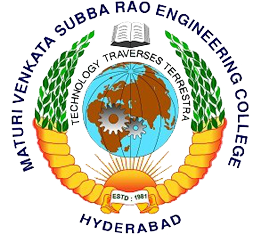WITH EFFECT FROM THE ACADEMIC YEAR 2013–2014
CS 415
SOFT COMPUTING
(Elective-III)
Instruction 4 Periods per week
Duration of University Examination 3 Hours
University Examination 75 Marks
Sessional 25 Marks
UNIT-I
Introduction: Neural networks, application scope of neural networks, fuzzy logic, genetic algorithm, hybrid systems, Soft computing. Artificial neural networks: Fundamental concepts, Evolution of neural networks, basic model of Artificial neural networks, Important terminology of ANNs, McCulloch-pitts neuron model, Linear separability, Hebb Network Supervised Learning Network: Perceptron networks, adaptive linear neuron (Adaline), Multiple adaptive linear neuron, Back propagation network, Radial basis Function network (Architecture& Training algorithms)
UNIT-II
Associative Memory Networks: Training algorithm for pattern Association, Associative memory network, Hetroassociative memory network (Architecture& Training algorithm), Bidirectional associative memory network Architecture, Discrete Bidirectional associative memory network, Continuous BAM ,Analysis of hamming distance, Energy function and storage capacity, Hopfield networks discrete &continuous. Unsupervised Learning Networks: Fixed weight competitive Nets, Kohonen self organizing network, Learning vector quantization (Architecture& Training algorithm) Adaptive Resonance theory network. Special networks: Simulated Annealing Networks,Boltzmann machine, Gaussian machine
UNIT-III
Fuzzy Logic: Introduction to Classical sets and fuzzy sets, Classical sets,Fuzzy sets: Operations and Properties. Fuzzy Relations: Cardinality, Operations and Properties, Equivalence & tolerance. Membership function: Fuzzification, membership value assignment: Inference, rank ordering, angular fuzzy sets
1
UNIT-IV
Defuzzification: Lamda Cuts for fuzzy sets and relations, defuzzification methods Fuzzy arithmetic and fuzzy measures: Fuzzy arithmetic, extension principle, fuzzy measures, measures of fuzziness, fuzzy integral Fuzzy rule base and approximate reasoning: truth values and tables in fuzzy logic, fuzzy propositions formation of rules
,decomposition of compound rules, aggregation of fuzzy rules, fuzzy reasoning, fuzzy inference system, fuzzy expert systems
UNIT-V
Fuzzy decision making: Individual, multiperson, multi objective, multi attribute, Fuzzy Bayesian decision making, Fuzzy logic control system: control system design, architecture &operation of FLCsystem,FLC system models,Aplication of FLC system.
Genetic Algorithim: Introduction,basic operators& terminology, Traditional algorithm vs genetic algorithm, simple GA, general genetic algorithm, schema theorem, Classification of genetic algorithm, Holland classifier systems, genetic programming , applications of genetic algorithm
Suggested Reading:
1. S. N. Sivanandam & S.N.Deepa, “Principles of Soft Computing”,
Wiley India, 2008.
2. Limin Fu, “Neural Networks in Computer Intelligence”, McGraw Hill, 1995.
3. Timoty J. Ross, “Fuzzy Logic with Engineering Applications”,
McGraw Hill, 1997.



